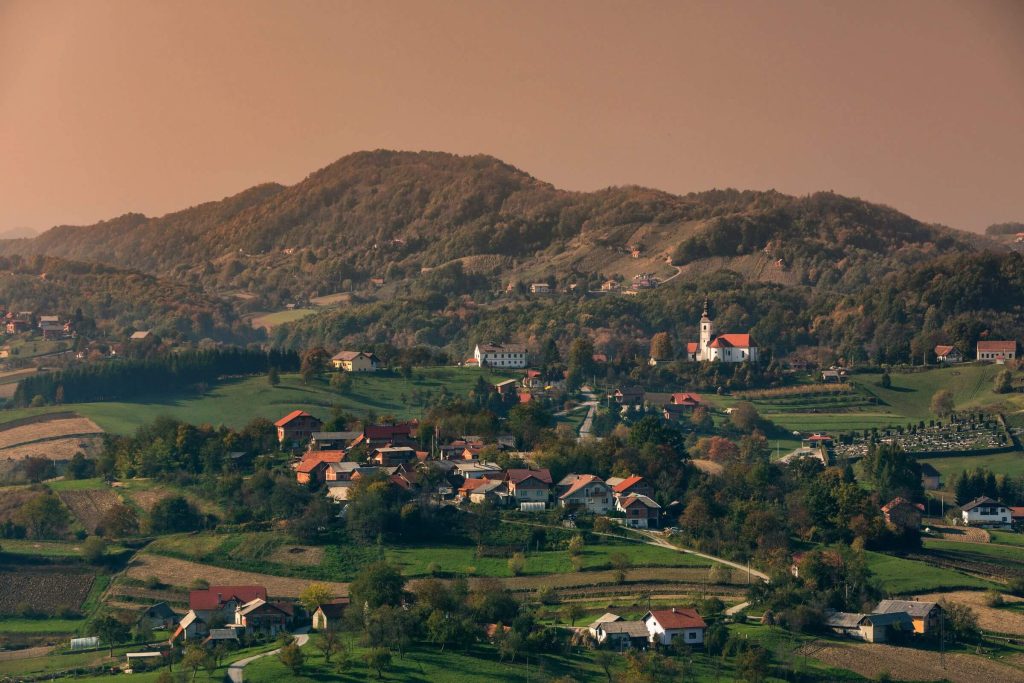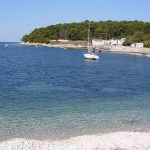Located in northern Croatia, the Zagorje region is bordered by Slovenia to the north and west, Međimurje to the northeast, Podravina to the east, and Zagreb to the south. The region’s largest towns are Varaždin and Krapina.
With its rolling hills, green forests, vineyards, and Habsburg-style castles, Zagorje can be described as a mix between Tuscany and Bavaria. The region is known for its many spa resorts (toplice), most notably Krapinske Toplice, Tuheljske Toplice and Varaždinske Toplice. Other attractions include the Disney-style Trakošćan castle, Marija Bistrica with its pilgrimage church, the Krapina Neanderthal site (Hušnjakovo), the Sljeme ski resort, and the ethno village in Kumrovec. There are also hidden attractions. In Bedekovčina, for example, there are three artificial lakes (bajeri). In the future, the lakes could become a destination for swimmers, sunbathers, and fishers.
Many known Croats were born in Zagorje, amongst them Ljudevit Gaj, the father of the Croatian alphabet (born in Krapina), Antun Mihanović, the author of the Croatian national anthem (born in Klanjec), Ambroz “Matija” Gubec, a 16th-century peasant revolutionary (born around Stubičke Toplice), Franjo Tuđman, the first Croatian president (born in Veliko Trgovišće) and Josip Broz Tito, the long-time dictator of Yugoslavia (born in Kumrovec).
Zagorje has a perfect location, 30 minutes from Zagreb, less than an hour from Maribor, 1 hour from Ljubljana, and 2 hours from Graz. In addition, two international highways run through the region, the one from Zagreb to Graz and the one from Zagreb to Budapest.
Not two, but actually three international railway lines pass through Zagorje; Zagreb-Budapest via Varaždin-Kotoriba, Zagreb-Celje (Slovenia) via Kumrovec, and the one from Zagreb-Celje via Zabok and Krapina. Unfortunately, the Kumrovec-line and the Đurmanec-Celje section of the Krapina-line have been closed for decades. Currently, there is no passenger traffic between Croatia and Hungary via Varaždin.
As seen, the Zagorje railways are underutilized. There are, however, positive signs. At the end of 2019, it was announced that the Harmica-Klanjec section of the Kumrovec-line and the Zabok-Đurmanec section of the Krapina-line would be modernized and electrified. In 2020, the electrification of the Zaprešić-Zabok section of the Varaždin-line was completed. In the coming years, the Zabok-Čakovec section will be modernized.
Moreover, there are plans to build a new railway from Krapina to Varaždin via Lepoglava and Ivanec, the so-called Lepoglava connection (Lepoglavska spojnica). If built, the travel distance from Zagreb to Varaždin would be reduced from 2 h to less than an hour. Direct train services from Zagreb to Varaždin via Krapina would benefit the whole Zagorje region.
If the Lepoglava connection is built and the lines to Slovenia are reopened and modernized, Zagorje could once again become an important railway link between Southeastern Europe and Central Europe.
For more, make sure to check out our dedicated travel section.










